CHALCEDONY
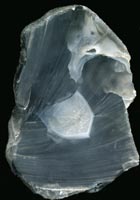 Characteristics of the mineral.
Characteristics of the mineral.
Chalcedony is a mineral, a cryptocrystalline variety of quartz, consisting of the finest fibers that can be distinguished only under a microscope. Hidden crystal variants of quartz are the basis of chalcedony. The name comes from the ancient city of Chalcedon on the coast of the Sea of Marmara. Usually chalcedony is translucent, sometimes translucent. Without admixtures chalcedony grayish. Hardness 7, density 2,6. Crystals do not form chalcedony. Typical forms of excretion: streaks, cortices, kidney-shaped, cluster-shaped forms, excretions of tonsils in volcanic rocks. In some cases very interesting forms are formed - chalcedony pseudostalactites.
The crystalline structure of chalcedony can be detected only under an electron microscope or detected using X-ray diffraction analysis. Chalcedony forms crusts, kidneys, spherulites, nodules. Electron microscope studies reveal its microfibrous structure. Along the fibers there are channels, and perpendicular to them - layers, from coarse to the finest (up to several thousand per 1 cm). Often these fibers are tightened into numerous spherulites. Chalcedony has a high porosity, a pore size of about 0.1 μm. Due to the presence of these pores, chalcedony can be stained. Chalcedony well accepts polishing, slightly shines, which gives it an indescribable beauty.
Chalcedony and especially its color varieties are extremely widely used as jewelry and ornamental stones. The most characteristic impurities are compounds of iron and aluminum. Quartz takes a variety of forms, forming a large group of minerals. There are many varieties of chalcedony, differing in color and structure: pink and meat-red - carnelian, brown-yellow - sardar, brownish green, apple or emerald green - chrysoprase, onion-green or gray-green - Plasma, bluish-gray - sapphirine; Agate is a variety of colored chalcedony with a concentric banded structure, dendragate - chalcedony with tree inclusions of manganese oxide, onyx is similar to agate, but its light and dark bands are plane-parallel.
Chalcedony in the narrow sense is usually called the stones of pale tones: milky blue, greenish-blue or yellowish colors. Chalcedony (calyldon) as a separate stone is mentioned in the Apocalypse (New Testament) when describing the walls of the Heavenly City. Blue chalcedony is known to people since ancient times. Along with sardonyxes and carnels, blue chalcedony was often used for the manufacture of stones.
Among chalcedony there are varieties with inclusions of flakes and dendrites, most often chlorite, manganese oxides or iron. Dendritic inclusions, spherulites and scales of minerals of green color form moss agate, or moss; The patterns of chlorite in it sometimes have bizarre outlines and resemble forest landscapes, dense thickets, branches or mysterious reservoirs. Manganese dendrites of black color, branched through the chalcedony, are often similar to branches of trees or shrubs, as well as formations similar to thin frosty patterns on glass. These stones have enjoyed great success in India and other countries of the East. When cutting, try to select the most beautiful parts of the stone with dendrites.
Magic properties of stones.
For many millennia, beads, inserts in rings, pendants were made from it. Chalcedony was decorated not only with clothes, but also with saddles, harness, and weapons. The magical properties of chalcedony depend on its particular variety.
Chalcedony in its pure form (grayish, bluish) was considered a stone of love, attracting the hearts of men to women. It is believed that chalcedony bears within itself a feminine essence that gives life and at the same time is contradictory. The Mongols call the blue chalcedony found in the Gobi desert stones of joy and believe that these stones are able to drive away melancholy and create a good mood. In India, Mongolia and China, the blue chalcedony was also revered as magical stones. In one of the ancient Indian treatises it is said that this stone has the color of pure consciousness. Ornaments with blue chalcedony can eliminate fear, inspire the owner with confidence in their own strength. It is believed that chalcedony, and primarily their blue varieties, are able to rid the wearer of outbursts of anger and bouts of melancholy. According to ancient concepts, chalcedony contains elements of air and ether, so this stone has a calming effect on the psycho-emotional sphere of man. Ornaments with chalcedony are advised to be worn by people who are easily aroused.
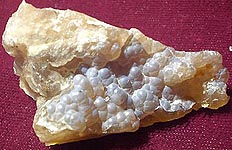

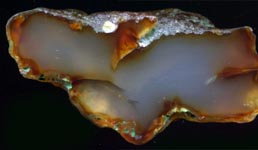

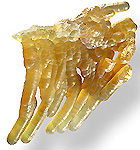
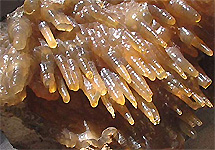
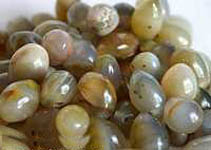


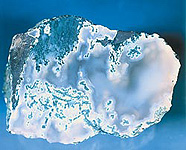
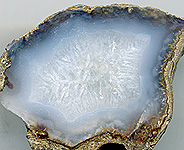
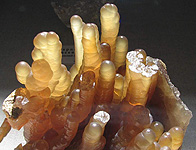
Poisonous and radioactive dangerous stones and minerals
** - poisonous stones and minerals (mandatory check in the chemical laboratory + explicit indication of toxicity).
** - radioactive stones and minerals (mandatory check on the standard dosimeter + ban on open sales in the case of radioactivity over 24 milli / g / h + additional measures of population protection).
All rare stones are subject to mandatory inspection at the standard dosimeter for the permissible level of radiation and in the chemical laboratory for the absence of poisonous and evaporating components that are dangerous to humans and the environment.


Comments
When commenting on, remember that the content and tone of your message can hurt the feelings of real people, show respect and tolerance to your interlocutors even if you do not share their opinion, your behavior in the conditions of freedom of expression and anonymity provided by the Internet, changes Not only virtual, but also the real world. All comments are hidden from the index, spam is controlled.